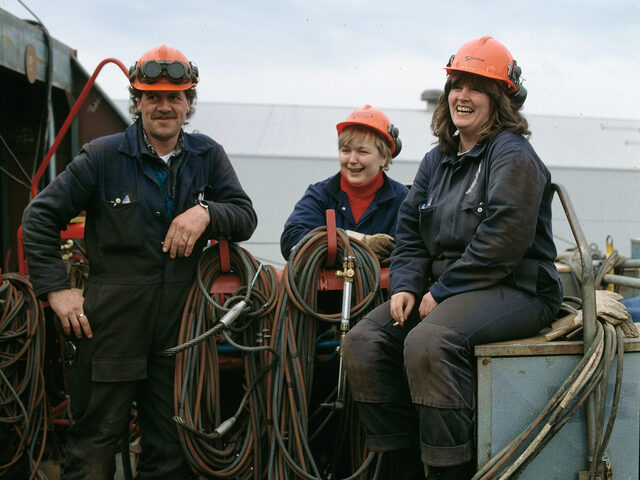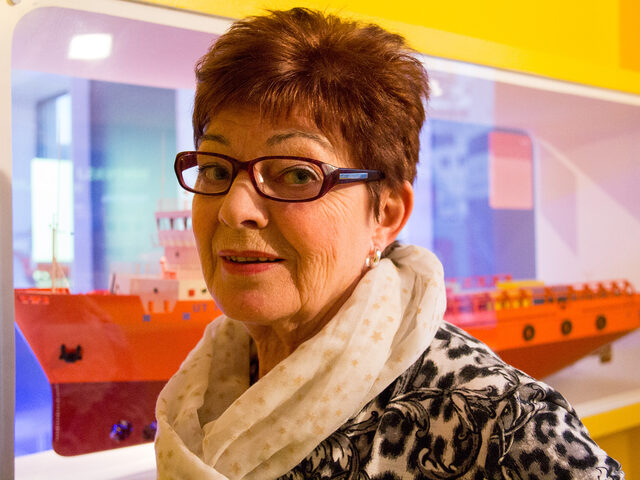Male godmothers
Published
Traditionally, all boats get their names in a naming ceremony, and traditionally, this is performed by a woman, who becomes godmother - or 'lady sponsor' - to the ship. Of Ulstein's more than 300 built vessels, we have twice experienced a male godmother. The first time was just bad luck.
Yard number 11 - Torulf
The first time we had a male godmother, was in 1957. Ulstein mek. Verksted had completed the car ferry 'Torulf', to be put in service between the ports of Torvik and Ulsteinvik. Although the ferry carries the yard number 11, she marks the start of complete ship construction at Ulstein, as all previous builds were repairs and conversions. With 'Torulf', the workshop had proven that it managed a complete construction process from drawings to launch. The ferry was also something new as she was the first steel vessel to be built by Ulstein. She is also the first ferry in Norway with a V-belt driven engine system. She marked the beginning of a whole series of similar ferries built at Ulstein mek.
During the naming ceremony in 1957, the champagne bottle was not broken, and it fell into the slip where one of the workers, Leif Breivik, was standing. He grabbed the bottle and threw it after the newbuild, which was already on the move. In that way, Leif became the true 'godmother' to 'Torulf'. The video below, filmed by Sverre Kristensen, shows glimpses from the naming day. The guests at the ceremony left for an excursion to the village Øye in the Norang fjord.
Yard number 268 - Tulpar
Tulpar is a combined icebreaker, supply vessel and standby vessel for very shallow waters. She has a draught of just 2.5 m, and is able to take on a deck load of 500 tonnes.
The ship was built in just 10 months. It was very important that the 'Tulpar' was delivered on 16 September 2002 and not one single day later. The vessel needed to commence her journey from the northwest coast of Norway to the Caspian Sea via rivers and channels from St Petersburg, before the rivers started to freeze. The vessel was delivered two days ahead of schedule, on 14 September 2002.
Being 21 m wide, there was a potential problem transporting the vessel to the Caspian Sea, as the channels are only 16 m wide. The solution was to mount the side sections and bridge wings after the vessel’s arrival in Astrakhan
Stig Slettebakk at Ulstein Verft supervised the final construction work together with five other colleagues, and he was asked by the Russian project manager, Mr Ingatov, to be the 'godmother' of 'Tulpar'. Stig tried to decline, but the project manager insisted that the Norwegian viking should take on the honourable task. In the top photo, Stig is preparing the champagne bottle together with Mr Ingatov. The others are the Russian QA manager and his assistant, and Roy Lindseth at Ulstein Verft.






